
“Our members are exhausted. And COVID is still here.”
That’s the situation facing senior living and other long-term care providers as 2023 begins, LeadingAge President and CEO Katie Smith Sloan and other industry leaders told McKnight’s Senior Living. Addressing the burnout plaguing existing employees while working to entice others to join the industry will be a major focus of providers as threats from the COVID-19 pandemic diminish somewhat but continue.
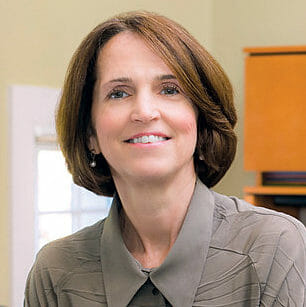
“COVID’s impact continues to resonate throughout aging services, even though throughout 2022 we were able to marshall new resources, including vaccines and boosters, in our ongoing battle with the virus,” Sloan said. “The pandemic’s taken a real toll on our mission-driven, nonprofit members, in terms of workforce, finances and mental health.”
And it’s not just nonprofit providers that continue to feel negative effects.
“Workforce will continue to be our biggest challenge,” National Center for Assisted Living Executive Director LaShuan Bethea said. “The pandemic has caused increased burnout among caregivers, especially in long-term care, where many feel forgotten or blamed by policymakers and the media for COVID, coupled with the ‘Great Resignation,’ which has made it difficult for providers to recruit replacements and to compete against other employers.”
James Balda, president and CEO of Argentum, said that senior living owners and operators are taking various approaches to attract and retain workers, “but as in the broader economy, there is a lack of workers for open positions and much job-changing when people are brought into buildings.”
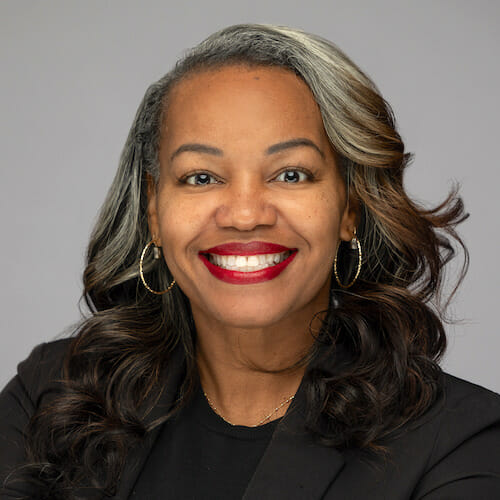
The entire long-term care sector has lost more than 300,000 workers since the pandemic began, which affects providers’ livelihoods and older adults’ ability to access care and services, Bethea said.
“When our members do not have enough caregivers, they must limit the number of residents they can serve,” she said. “This is a real challenge right now, especially in rural communities where there is a limited pool of potential workers.”
In an NCAL survey released in June, 30% of participating assisted living providers said they were limiting new move-ins (24%) or closing their communities (6%) as a result of operating and staffing challenges.
Action from policymakers is needed, Bethea added.
More than 1 million caregivers will be required in the coming years as the large baby boomer population continues to age, Balda said. The oldest members of that generation are now aged 77 years, with the youngest in their late 50s. Every day, 10,000 Americans are turning 70, and up to 70% of them will need some form of long-term care during their lifetime, he said.
Adequate competent staffing is a perennial issue in long-term care that has been exacerbated by the pandemic, but one of the lessons of that experience, Sloan said, is that new recruiting and retention approaches will be needed.
“We’ve come to understand more than ever before that the workforce has changed,” she said. “We can no longer assume or take for granted that people will flock to aging services, which means how we recruit and retain must change.”
COVID-19 a looming presence
COVID-19 remains a looming presence as the new year starts, with subvariants of omicron circulating and the very real likelihood of new variants emerging. A bivalent booster shot was introduced in the fall of 2022 to fight the original virus strain as well as omicron. Lacking, however, was an aggressive national plan to roll it out to long-term care staff members and residents as had been done with the original doses of the COVID-19 vaccine in late 2020 and early 2021. As a result, the vaccination rate of staff members and residents is lower than the industry would like.
The American Health Care Association/NCAL in late December released a new handout, “Why Residents Should Get the Bivalent Booster,” to help long-term care staff members discuss the value of the bivalent booster with residents.
LeadingAge members, Sloan said, “are redoubling efforts to increase booster rates among older adults and staff.” The possibility of new variants, she added, “means we’ll be on guard for the foreseeable future.”
In addition to individuals staying up to date on vaccination, the Centers for Disease Control and Prevention currently recommends that assisted living communities and other congregate living settings base their prevention strategies on levels of COVID-19 in the general community as well as consider improving ventilation, consulting with the local health department about testing strategies, expanding the use of mask and respirators, enhancing cleaning and disinfection protocols, and creating physical distance in congregate areas or reducing movement and contact between different parts of the facility and between the facility and the greater community, as appropriate.
In the greater community, 2022 ended with an increasing number of local government leaders — in Los Angeles County and New York City, for instance — encouraging a return to indoor mask-wearing, Sloan pointed out. A return to widespread lockdowns and similar mandates, however, seems unlikely.
“At the end of the day, what’s essential is collaboration at the community level. COVID spreads through the community, and older adults, who are a part of every community, are vulnerable,” she said.
Because testing is an essential part of keeping communities safe, Sloan said, LeadingAge worked with the Department of Health and Human Services and the Department of Housing and Urban Development to ensure the delivery of free COVID-19 test kits to residents living in HUD Section 202 Housing for the Elderly. The portal opened Dec. 22, and providers can order kits every week.
Dealing with the financial fallout
Beyond addressing the health effects of the pandemic, the senior living industry is dealing with its financial fallout as well as challenging economic conditions in general.
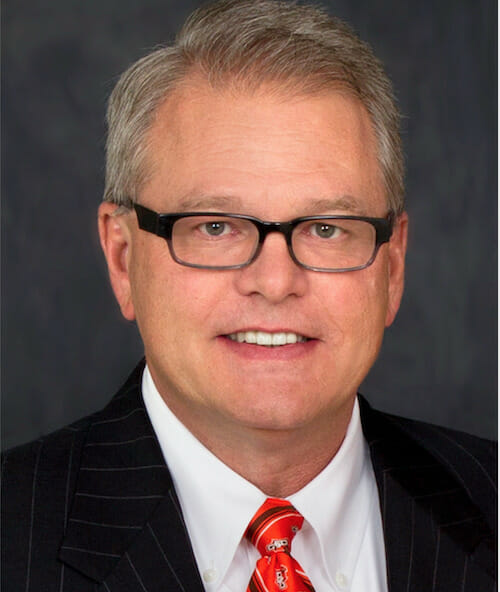
“Forty-year high inflation levels have raised the cost of virtually all goods and services, impacting expenses and squeezing margins and net operating income,” said Raymond Braun, who was announced in October as the new president and CEO of the National Investment Center for Seniors Housing & Care. “The response of the Federal Reserve has been to raise interest rates and significantly raise the cost of borrowing for both operations and acquisitions. This caused the transaction markets to stall. Finally, the threat of a recession lingers, which could have an impact on demand for senior housing.”
American Seniors Housing Association President and CEO David Schless pointed out that inflation in 2022 “grew at rates we haven’t seen since the 1970s” and that, as the Fed began a series of interest hikes to control it, “the cost and availability of capital (particularly debt) has significant impact on our business — which is, of course, capital-intense.”
Indeed, the availability and the cost of securing financing will be a “significant challenge” in 2023, Braun said.
“Lenders are taking a more cautious look at borrowers and their ability to repay their debt obligations,” he said. “Even reliable commercial real estate borrowers with long-term relationships with lenders are being turned away for some requests as many lending institutions begin to ‘ration’ loans.”
Borrowing related to construction will be the most challenged, Braun predicted. He added, however, that “stricter underwriting standards, lower loan-to-value ratios and higher debt service coverage and reserve requirements are making it more difficult to refinance existing debt obligations as well as obtaining new debt commitments for acquisitions and refinance opportunities.”
Questions outstanding for providers, Sloan said, include whether the economy will grow or contract and whether Congress will allocate more resources to bolster the sector at a time when “COVID-related government aid has for the most part dried up.”
Merely staying afloat will be the industry’s second biggest challenge in 2023 after addressing workforce issues, Bethea predicted. She pointed to an NCAL survey released in June that found that, on average, assisted living providers said that operational costs have increased 40% compared with a year prior. Thirty-seven percent said they were operating at a loss, and 35% said they could not sustain their current operating pace for more than a year.
Schless noted that in addition to inflation, operators are facing higher labor-related expenses for increased overtime pay, the use of agency staffing, higher hourly wages and benefits, as well as “substantial increases” in the cost of food, utilities, supplies and other expenses.
Prospects face issues, too
Of course, residents, potential residents and their families are facing similar financial issues, the industry leaders said. Long term, some said, more affordable options need to be made available for those looking to live out their retirements in senior housing.
“It’s really challenging because many individuals that live in assisted living communities not only need the housing but, in many cases, also need some limited health care services,” Bethea said. “The vast majority of Americans can’t afford to plan for this expense.”
To meet the growing needs of older adults, she said, the industry must look for ways to expand affordable assisted living options for low to moderate-income older adults who are no longer able to live at home. “NCAL is committed to working on this issue and offering solutions for AL providers to develop further,” she said.
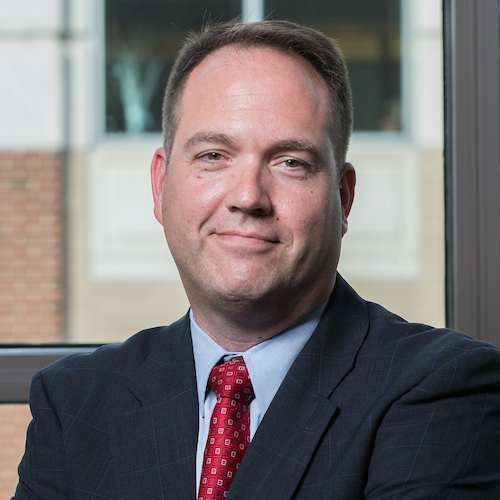
Balda, too, said that “meeting the demands of the so-called Forgotten Middle-class consumer” is an area that the industry needs to look at.
Low-income older adults have limited options, Sloan pointed out, noting that “[d]emand for affordable housing and services far outstrips supply.” Although last year Congress appropriated more funds for Section 202 properties, “it’ll take some time for that supply to come online. And meantime, need is growing,” she added.
But operators who serve older adults with middle and higher incomes also continue to navigate issues related to operating costs, workforce and affordability, Sloan noted.
Demand ‘relatively strong’
Braun characterized demand for senior housing as “relatively strong,” with communities continuing to recover from the worst days of the pandemic.
“In fact, in the third quarter of 2022,” he said, “the number of occupied assisted living units reached a new peak” for the 31 primary markets that NIC follows.
“That said, the occupancy rate, which takes new inventory and competition into account, still has not reached pre-pandemic levels,” Braun added. “For assisted living, for example, the total occupancy rate was 79.7% in the third quarter for the NIC MAP primary markets. This was up from the pandemic low of 74.1% in early 2021 but remained 4.9 percentage points below the first-quarter 2020 rate of 84.6%.”
It could take some senior living communities “potentially several more years to overcome the challenges they faced during the pandemic,” Balda said.
“This is from slowly recovering from historic occupancy declines to the increased costs … and the newer inflationary pressures that are just starting to slow down but remain very high,” he said.
Although the “tripledemic” of COVID, the flu and respiratory syncytial virus especially could affect providers who care for the frailest older adults, Braun said, “occupancy rates are generally rising, and that should support revenue growth.” Until inflation rates subside, however, he added, “many operators will be challenged to grow NOI.”
“In today’s environment of labor shortages, high rates of inflation, rising interest rates, challenges in servicing debt, improving but relatively low occupancy rates, and a potential economic recession, some operators will increasingly be pressed to maintain financial stability,” Braun said. “This poses a challenge for our industry in 2023 and beyond.”
Schless said he is hopeful that the situation will improve by 2024, “but there is no doubt that for some communities, occupancy softness, inflation, workforce challenges, a cool housing market, and interest rates will be among the variables at play.”
Whenever things do improve to a satisfactory level, “recovered” might not be the best word to describe a post-pandemic industry, Sloan said.
“Recovery suggests a return to a former state, but I think we’re headed to a new ‘normal,’ ” she said.
Solutions backed by advocacy
Getting to that “new normal,” however, will require solutions, with advocacy behind them.
“There is no resting on any of these challenges,” Balda said.
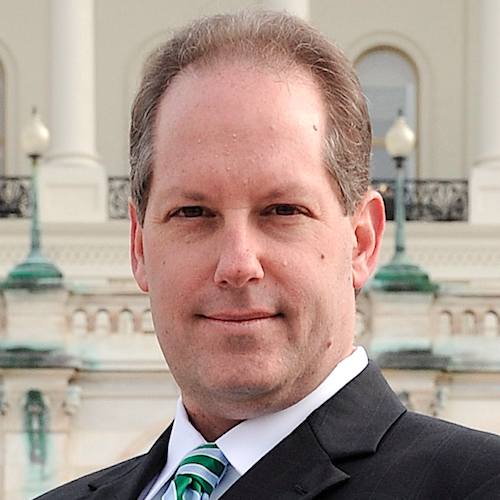
ASHA in 2022, Schless said, added lobbying capacity by engaging Laura Foote Reiff of Greenberg Traurig, whom he described as “one of the very best immigration lobbyists.” She will work with the association “to explore a host of avenues to increase the number of workers for our profession,” he added.
Argentum, Balda said, “led with legislation in this [previous] Congress like the SENIOR Act to make a once-in-a-generation investment in senior living providers, and we will continue to work with lawmakers — including the newly formed 21st Century Long-Term Care Caucus — to promote the needs of senior living providers and deliver solutions that will help make us better prepared to meet the caregiving needs of our seniors now and into the future.”
The association also collaborated with a broad coalition of industry groups and lawmakers from both parties on programs to help recruit and retain workers, Balda said.
“This includes advocating for sensible solutions to advance opportunities for legal immigration to programs like the Workforce Opportunity Tax Credit, Essential Workers for Economic Advancement, and efforts to restore the Employee Retention Tax Credit,” he said. “Our efforts to advance federal workforce legislation are augmented by our work with regulators to strengthen existing programs, such as the Health Careers Opportunity Program, Geriatrics Workforce Enhancement Programs, and the National Health Service Corps.”
Additionally, Balda said, Argentum’s state partners also secured “tens of millions” of dollars from the American Rescue Plan Act’s $195 billion fund for states, which was established to support COVID-19 mitigation efforts as well as “industries hardest hit by the crisis.”
“Among the efforts, we are currently leading is a $6 million grant through the Healthcare Apprenticeship Expansion Program,” he said. “These grants offer reimbursement of up to 50% of apprenticeship wages and 50% reimbursement of training costs for eligible owners or operators of senior living communities and is intended to address the skills gap in healthcare and health IT positions by expanding apprenticeships for positions like CNAs, LPNs, RNs and rehab technicians.”
Meanwhile, LeadingAge in December proposed a new White House Office on Aging Policy in a letter to President Biden. Sloan described the idea as “radical” but necessary.
“The concerns relevant to older adults, their family members and the hardworking people who serve and care for them span a range of areas, from health and long-term care to housing, technology, agriculture and more,” she said. “Responsibilities within the federal government for policies related to them are spread across more than 25 agencies, and while some aging policies within those agencies are robust, there are also policy redundancies, gaps and an inconsistent distribution of resources,” resulting in “severely inadequate support” for US older adults.
In fact, Sloan said, LeadingAge continues to push for an “all-of-government approach” to developing solutions to many of the issues challenging senior living and other long-term care providers — changes to policies such as immigration, and improving the country’s education and training infrastructure, for instance.
“Simply put, our country must prioritize older adults,” she said.
The new Congress, which will begin convening today, offers a new starting point.
“LeadingAge is committed to working with the new Congress, with a focus on policy, leadership and relationship in our dealings with the new world order on Capitol Hill, to make a difference,” Sloan said. “As long as COVID is with us, we believe that there’ll be continued attention on older adults — which would be a good thing. People might realize that this is a sector that’s been overlooked. But time will tell; I have no crystal ball.”
‘The worst is behind us’
Bethea said she believes that providers will be dealing with the aftermath of the pandemic for “many years” but, similarly to Sloan, said she also realizes that “no one can predict the future.”
“But I’m optimistic the worst is behind us and we’re headed in the right direction,” she said. “We have amazing providers that are doing everything they can to keep their communities on track and provide the highest quality care for their residents. In the meantime, NCAL is doing everything we can to fight for AL providers and the needs of their residents and staff, in Washington.”
Schless also described himself as ultimately optimistic about the sector’s future. “I think the industry will be in much better shape entering 2024 than it is entering 2023,” he said, noting that although several providers have struggled, several senior living communities across the continuum “have held up remarkably well during the COVID era.”
When the COVID era finally ends, the industry will be changed for the better, the leaders said.
“We’ve seen some positives come from the pandemic: new approaches to infection control and prevention; some fresh attention to processes and rethinking of care and services delivery — video, Zoom, telehealth, to name a few,” Sloan said.
Braun noted that the pandemic has been “the worst health crisis we’ve seen in 100 years.”
“But operators certainly rose to the occasion, implementing many practices that will remain in place for any future health crises,” he said. “Safety measures remain a priority, isolation rooms are ready to go, and sanitation and masking practices are top of mind.”
Additionally, Braun said, “a recognition of the effect of social isolation also persists, leading to a renewed focus on resident wellness, quality of life and purpose.” More broadly, he added, the value proposition provided by senior housing remains in place, “and that includes socialization, security, engagement, room and board, care coordination, lifestyle and wellness programs that support a high quality of life.”
Indeed, not all of the effects of the pandemic on the industry are negative, Schless said.
“For example, the industry has become significantly more advanced in terms of its focus and ability with respect to infection control and prevention,” he said. “The COVID pandemic, likewise, accelerated the shift to digital marketing and forced the industry to become appreciably more focused on becoming a better place to work and advance.”
Thankfully, Schless said, research that ASHA conducted with ProMatura does not suggest that the pandemic has eroded the desirability of senior living for either older adults or their adult children.
Argentum is entering the new year with a new strategic vision, the process for which it announced at its 2022 annual conference in May in Minneapolis. The association tapped strategy and culture consultancy Thruue Inc. to guide the effort, Balda said.
“It rides on three big ideas: people, trust and choice,” he said. The four strategic imperatives in the plan are focused on positive change, favorable regulation, industry advancement and growth.
“We are focused on strengthening our members’ ability to thrive in offering seniors a first-class, high-quality, non-institutionalized care home,” Balda said. “Senior living communities are home, and we can never stop pushing to make that message clear and to serve our residents and families, while building a long-term workforce to care for their needs.”

